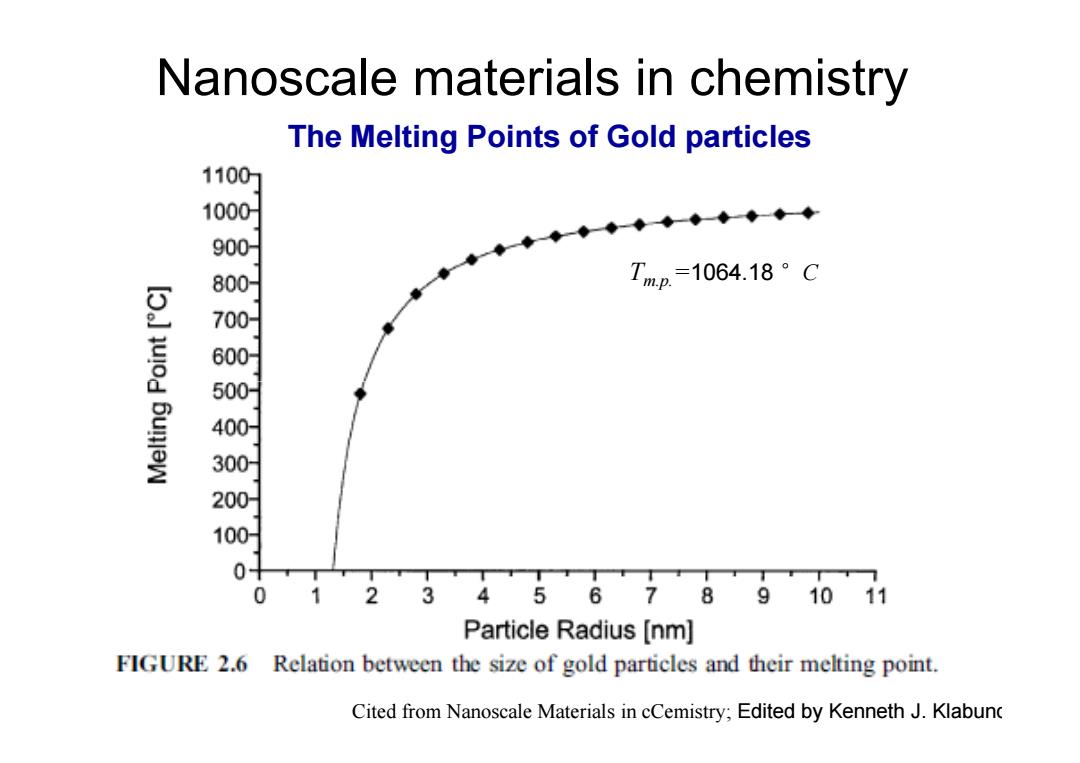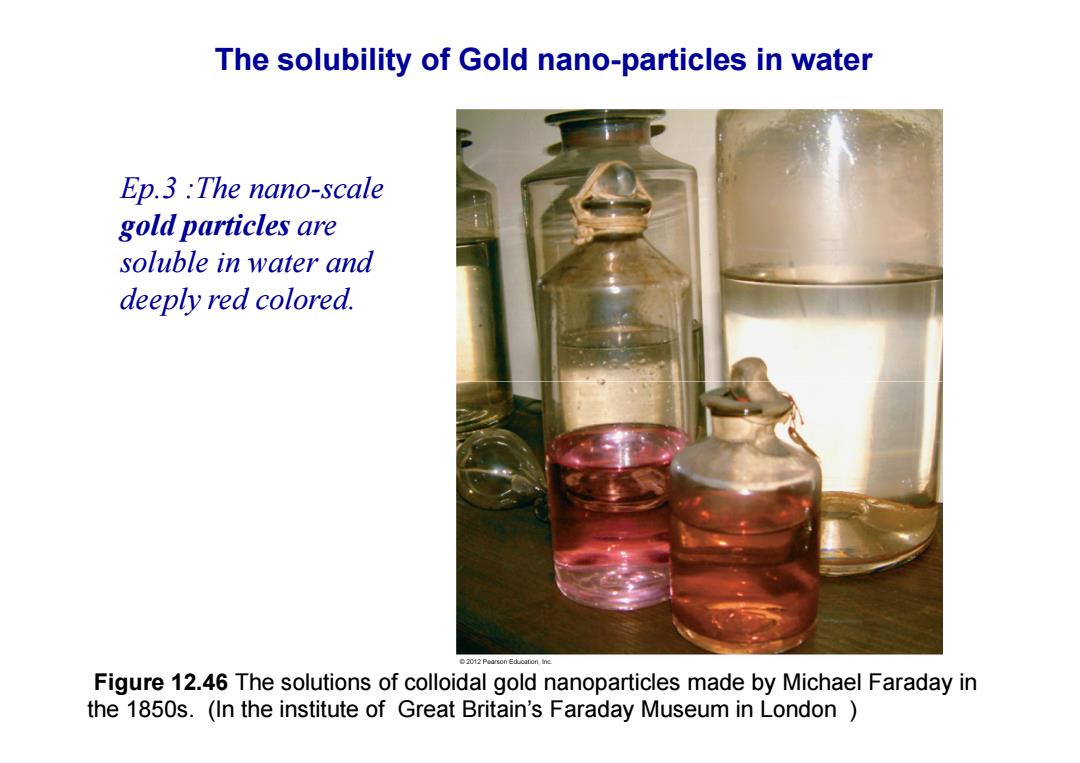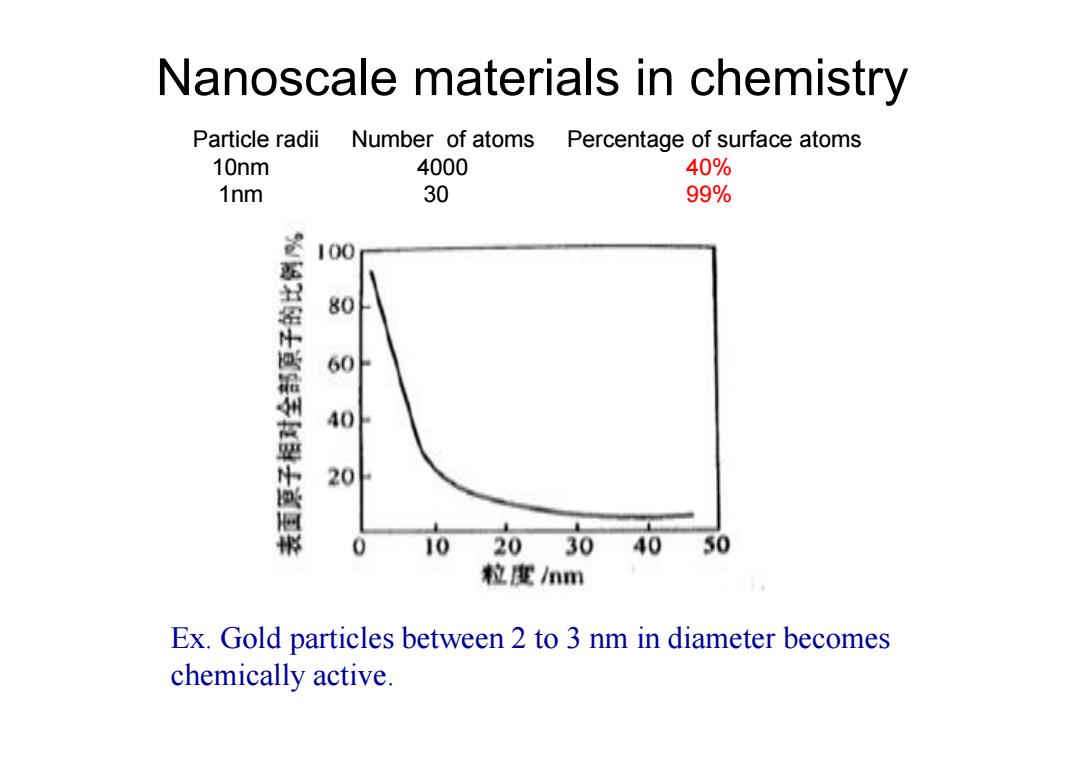
Nanoscale materials in chemistry The Melting Points of Gold particles 1100 1000 一◆◆◆◆ 900- 800 Tmp=1064.18°C 700 202 1 0- 0 34567891011 Particle Radius [nm] FIGURE 2.6 Relation between the size of gold particles and their melting point. Cited from Nanoscale Materials in cCemistry;Edited by Kenneth J.Klabunc
Nanoscale materials in chemistry The Melting Points of Gold particles Tm.p. =1064.18 °C Cited from Nanoscale Materials in cCemistry; Edited by Kenneth J. Klabunde

The solubility of Gold nano-particles in water Ep.3 The nano-scale gold particles are soluble in water and deeply red colored. 2012P Figure 12.46 The solutions of colloidal gold nanoparticles made by Michael Faraday in the 1850s.(In the institute of Great Britain's Faraday Museum in London
The solubility of Gold nano-particles in water Ep.3 :The nano-scale gold particles are soluble in water and deeply red colored. Figure 12.46 The solutions of colloidal gold nanoparticles made by Michael Faraday in the 1850s. (In the institute of Great Britain’s Faraday Museum in London )

2012 Pearson Educalion.Inc Figure 12.45 Stained glass window from the Chartres Cathedral in France
Figure 12.45 Stained glass window from the Chartres Cathedral in France

Nanoscale materials (2)表面与界面效应:纳米晶体粒表面原子数与总原子数之比随粒径变小而 急剧增大后所引起的性质上的变化。 The percentage of TABLE 2.1 The relation between the total number of atoms in full surface atoms shell clusters and the percentage of surface atoms Full-shell Clusters Total Number Surface Atoms of Atoms (% 1 Shell 13 92 2 Shells 55 76 3 Shells 147 63 4 Shells 309 52 5Shells 561 45 7Shells 1415 35 Cited from Nanoscale Materials in Chemistry; Edited by Kenneth J.Klabunde
(2)表面与界面效应:纳米晶体粒表面原子数与总原子数之比随粒径变小而 急剧增大后所引起的性质上的变化。 Nanoscale materials The percentage of surface atoms Cited from Nanoscale Materials in Chemistry; Edited by Kenneth J. Klabunde

Nanoscale materials in chemistry Particle radii Number of atoms Percentage of surface atoms 10nm 4000 40% 1nm 30 99% 100 20 0 10 2030 4050 粒度nm Ex.Gold particles between 2 to 3 nm in diameter becomes chemically active
Nanoscale materials in chemistry Particle radii Number of atoms Percentage of surface atoms 10nm 4000 40% 1nm 30 99% Ex. Gold particles between 2 to 3 nm in diameter becomes chemically active